The famous Ephesus Library was situated to the south of the Agora. This elegant monument was built in A.D. 135 by Julius Aquila In memory of his father, Celsus Polemaeanus of Sardis, Roman Senator and Proconsul of the province of Asia.
After passing through a marble-paved courtyard twenty-one meters wide one reaches the main reading-room by nine wide marble steps. There are four bases for statues at the top of the staircase The floor of the main reading room is built on arched vaults and the inner and outer walls are separated by a corridor, thus protecting the library from damp.
The walls and floor of the room were completely faced with colored marble. Across the main reading room there was an exactly placed niche for offerings; to the right and left of the round niche and on the side walls were square niches containing cupboards to hold the rolled manuscripts. On the front of the Library of Ephesus there was a two-storied gallery.
A section sixteen meters high was very richly decorated with a raised column, door ornaments and sculptural architectural monuments, carving and decoration. These carvings are to be seen in the Vienna Museum.
In a burial chamber in the lower part of the library can be seen a decorated white marble tomb in which Gaius Julius Celsus Polemaeanus was buried. The life of Celsus is related in Greek and Latin on the bases of the statues on each side of the library staircase.
History
The Library of Celsus was comissioned by the Consul Julius Aquila as a mausoleum for his father, Julius Celsus Polemaeanus, Roman governor of the Asian Provinces. It may be that Celsus was granted heroic honors, which would furthur justify the expense.
The monument was constructed between 110 and 135 AD, after which Celsus was buried in a niche on the right side of the back wall.
With a few centuries of its construction a fire destroyed the reading room and the library fell into disuse. Around 400 AD, the courtyard below the exterior steps was converted into a pool. The facade collapsed in an earthquake in the 10th century.
The Library of Celsus was raised from the rubble to its present splendid state by F. Hueber of the Austrian Archaeological Institute between 1970 and 1978.
What to See
Located next to the south gate, the Library of Celsus is 21m wide and over 16m high with a 2.4m-deep portico. The mausoleum-library originally had three stories, with galleries in the upper two stories.
Scrolls and codexes were stored in the niches, dispensed by a librarian. In total, 30 bookcases held about 12,000 scrolls. The reading room faced east in order to take advantage of the best light.
The lower niches of the facade contain four statues, which are through to represent Wisdom, Knowledge, Destiny, and Intelligence. These are replicas of the originals that are now in Vienna.
Latin and Greek inscriptions can be seen among the ruins of the library.
Quick Facts
- Names: Celsus Library; Library of Celsus
- Type of site: Mausoleum
- Faith: Roman
- Status: Ruins
- Dates: 110-35 AD
- Architecture: Classical
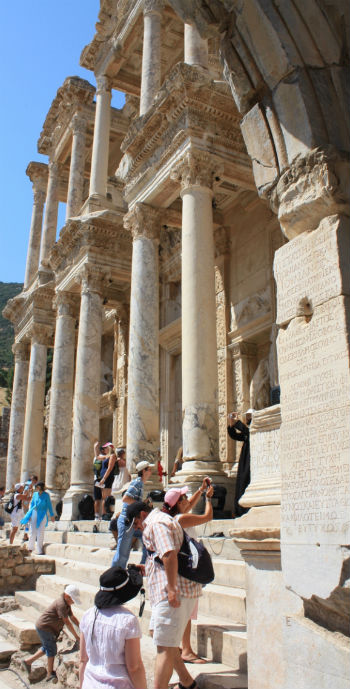
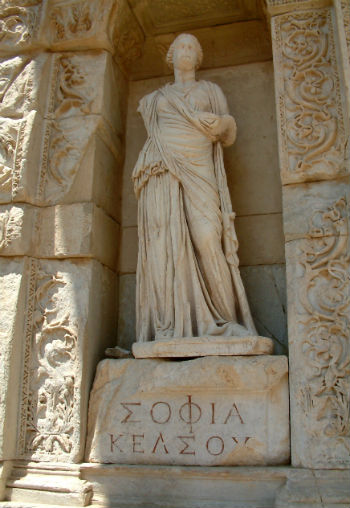
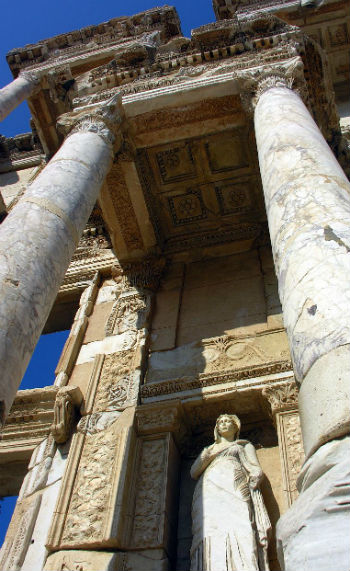
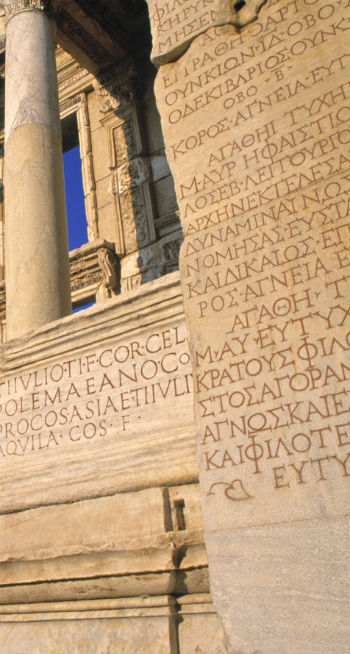
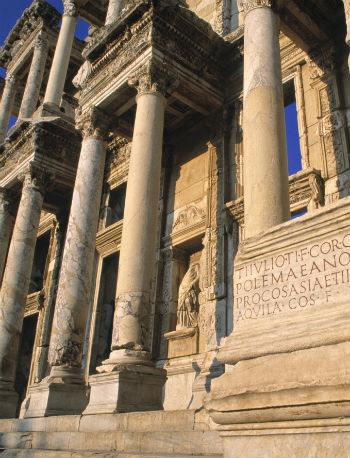
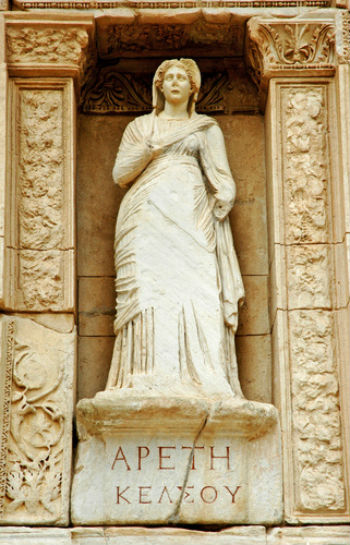
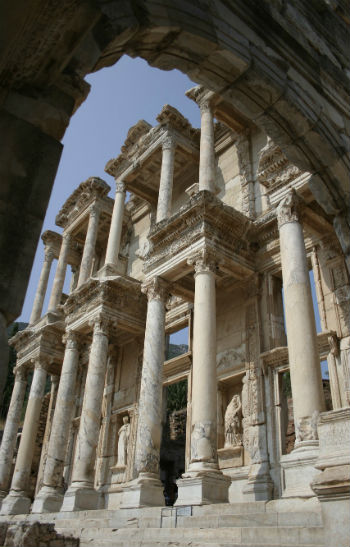


it is a real ancient piece of art, if you stand up in front of this place ,you can feel what a special place it is
This is probably the best known landmark of Ephesus….the Celsus library was the biggest library of the ancient times …Only the facade still remains…but itz a stunning view as one descends down the slope…
Most impressive well preserve ruin I have ever seen.
You can really imagine the scrolls on the shelves. Our guide told us a tale about a secret tunnel beneath the library leading to the Church sactioned Brothel across the street. There was allegedly a Jewish Synagogue behind the library.
The most important reason to visit Ephesus. While the site has a number of fascinating features we were absolutely stunned by the beauty of the library. Don't miss it!